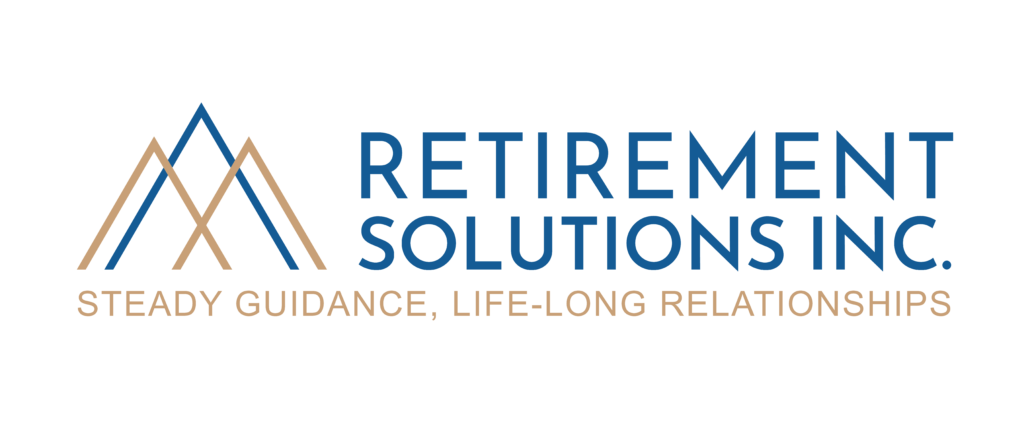Five “Hidden” Tax Opportunities
Many Americans think: “The only way to decrease my taxes is to reduce my income.”, but there’s a better way.
You suspect you’re paying too much in taxes, but you make too much money to fall into any of the categories that lead to lower tax payments. It feels impossible to feel optimistic, especially when it seems like you’re paying more than the billionaires paying close to zero in taxes.
While you’d like to pay less, you don’t want Uncle Sam knocking on your door for an audit either! Tax forms can be complicated and opaque, making it hard to know if you’re claiming the right amount in deductions and credits. You’re tired of feeling like someone’s taking advantage of you when it comes to taxes.
It’s not that you object to paying your fair share in taxes. The problem is you don’t really know if the amount you’re paying is fair. It might stress you out so much that you delay meetings with your accountant… but the thought of filing late gives you gut-wrenching anxiety too.
The good news is that there may be some tax opportunities buried in your tax return, and all you need to do is a little digging. The bad news is that these opportunities could disappear if they aren’t used before midnight on December 31, 2022. When they expire, if you haven’t unearthed them, you’ll still be left with questions about whether you’re paying too much. And whether the IRS will come after you.
If these hidden opportunities don’t disappear this year, they could by December 31, 2025, when some of the 2017 Tax Cuts and Jobs Act (TCJA) provisions are set to expire.1
However, by capturing the strategies that work for you before they expire, you won’t have to worry about paying too much – or too little – in the eyes of the IRS.
At the end of 2022, many of these opportunities – whether you take advantage or miss out on them – will be locked in for this tax year.
This tax-smart, informative guide is designed for high earners who want to discover if they might be leaving money on the table or in the hands of the IRS.
You may be asking yourself questions like:
- Do I have to make less money to pay less in taxes?
- How can I legally reduce my income tax payment?
- Are there tax-saving opportunities I don’t know about?
- Am I missing anything in the tax code that could benefit me specifically?
- Is there a financial professional I trust to be a sounding board when it comes to my tax game plan?
If any of these resonate with you, keep reading…
Convert your way to more after-tax money
For high earners, your income is high enough to make the deduction for retirement contributions valuable. While you want to take that deduction now, you may be worried about taking the money out in retirement where the entire withdrawal will be taxable.
Since you don’t get a deduction for after-tax money, it doesn’t seem to make sense right now – but wouldn’t that tax-free withdrawal in the future be nice?
That’s where a Roth conversion comes in. Convert some of the money in your traditional pre-tax account into a Roth. Even though the amount you convert is taxable now, a conversion can still make sense for some high-income earners.
Any year your income temporarily drops can be a good time to convert. When you’re in a lower tax bracket, conversions can help you take advantage of that tax rate.
Conversion can also be a smart move EVEN when you’re not in a particularly low income year. If you believe that taxes will continue to rise, this year’s tax bracket could be the lowest of your life until you retire. Maximize it this year by converting enough to “fill up” your current bracket without pushing you into the next higher one.
You may also have the ability to use a “backdoor Roth.” Once you max out your pretax contributions to your employer retirement plan, you can make non-deductible contributions to a traditional IRA and convert them immediately.
If your employer plan allows, you could use the mega backdoor Roth technique to add nondeductible contributions to your employer plan. If your plan allows it, your total contributions between salary deferral, employer match, catch-up, and your extra contributions are capped at $61,000.2
Naturally, there are terms and conditions for a “deal” like this. Not only do the conversions need to happen by December 31, but the ability to convert for high-income earners is perennially on the chopping block. Don’t miss out by waiting too long!
Questions to ask include:
- Am I in a good position to convert some pretax money to after-tax money this year?
- How close am I to “filling up” my current tax bracket, and do I have room for conversions?
- Is my employer retirement plan one that allows me to make after-tax contributions after I max out my salary deferrals?
- Do I have a financial professional who’s knowledgeable about Roths to advise me?
Be charitable and skip your required withdrawals
The 2017 Tax Cuts and Jobs Act (TCJA) rolled back the required age for minimum withdrawals from retirement accounts from age 70 ½ to 72. If you don’t need the income when you turn 72, you may resent having to pay taxes on withdrawals you don’t need to take. That’s money that you’d prefer to leave in your retirement accounts for later when you may need it or to provide a legacy.
That’s where charity comes to the rescue. Why wait to give money to a favorite cause until after your death? Instead, you can give them operating cash up to $100,000 today through your Required Minimum Distribution (RMD) – and avoid paying taxes on your withdrawal. This strategy is known as the Qualified Charitable Deduction, or QCD.
It’s critical to send the money directly to the charity from your retirement account because the contribution is disqualified if the money makes a stop in your checking or other account along the way. As long as you follow the requirements, your QCD allows you to achieve the simultaneous objectives of supporting a cause that’s near-and-dear to you and reducing the amount of taxes you have to pay the government.
Think about the following:
- Is there a charity I’d like to donate money to?
- Am I required to take RMDs from my retirement account? Even if I have a Roth 401(k)?
- What are all the rules I need to follow to ensure my QCD stays “legal” so I don’t have to pay taxes on my RMDs?
- Do I have a financial professional who understands QCDs and their impact on my financial plan?
Make the right investment account moves
Chances are that you’re maximizing your employer-sponsored retirement account contributions in terms of how much money you can defer from your salary. And chances also are that the account is a traditional, or pre-tax, account.
Do you have the right investments in that account versus your after-tax or taxable accounts? It’s not just about finding savvy investments, it’s also about determining where to put them. After all, as they say in real estate, it’s all about location, location, location.
Some types of assets perform better in one type of account over another. Ensuring you’ve got the right assets in the right places can potentially help you lower your tax bill.
As noted in Covert Tax Strategy #1, after making your maximum salary deferral, you can also contribute to an after-tax IRA, and/or potentially add more after-tax money to your 401(k) plan.
If you own your own business, you have access to a variety of retirement plans – solo 401(k)s, SEP and SIMPLE IRAs, and pension plans. Depending on your business, you may be able to set aside more retirement money in one plan compared to another after plan fees are considered. Do you have the right plan for your business?
Additional benefits come from tax-advantaged 529 college plans and Health Savings Accounts (HSAs) that are tied to a high-deductible health plan. If these are applicable to you, make sure you’re adding them into your overall financial strategy and ensuring that the right investments are going into those accounts too.
It’s critical to extract as many tax deferral opportunities as you possibly can from your accounts, whether they’re designated for retirement or not.
Consider these questions:
- Do I need to review which assets I invest in which accounts?
- Am I able to add more after-tax money to my employer-sponsored retirement plan?
- If I own my own business, do I have the best retirement plan for my specific situation?
- Am I letting any tax deferral opportunities slip away?
- Do I have access to a financial professional who can help guide me through all these investment strategies?
Gather ye deductions while ye may
As every business owner knows, deductions are key to reducing your tax exposure. Even if you’re not an entrepreneur, tax deductions are hugely beneficial – but, of course, you need to understand which ones work for you. Tax deductions that wealthy people have relied on for years such as state and local tax deductions, including mortgage interest and charitable deductions, were seriously cut back through the TCJA of 2017.
Depending on your financial and portfolio situation, it still might make sense to accelerate your mortgage payments. You might even consider paying off more of your mortgage and retiring the debt now that the tax deduction for mortgage interest is capped.
It’s also time to bundle deductions if you didn’t do it last year. Most itemized deduction opportunities for the 2022 tax year expire on December 31, so make sure you’re on track to seize them before the end of the year. At the moment the standard deduction is $25,900 for married taxpayers filing jointly.3
That means you’ve got to bundle up if you want to itemize. Consider making several years’ worth of charitable contributions in one year. If your 2023 property taxes are billed or levied before the end of 2022, prepay them and claim them as a deduction if possible. (NOTE: You can’t claim your 2023 property taxes in 2022 unless they’re formally billed by your local government before December 31, 2022, even if you’ve already paid them).
Unreimbursed medical expenses are deductible if they meet the 7.5% Adjusted Gross Income (AGI) floor, so accelerate any medical procedures and payments that your health insurance doesn’t cover. These also include items such as long term care premiums and home modifications if you’re planning to age in place. While you can’t prepay for services you intend to have in 2023, you can increase your deductible expenses by scheduling services and procedures before December 31, 2022 that you would otherwise postpone.
Necessary questions to ask include:
- Do I have expenses like property taxes and medical expenses that I can bundle into this year along with my charitable contributions?
- Should I consider paying down my mortgage instead of adding more money to my taxable brokerage account?
- What deductions am I potentially missing out on?
Wring out your 2022 tax rates
2022 tax rates are relatively low, especially for high earners. Historical trends show that tax rates can rise rapidly after periods of lower rates.4
The increase could be as soon as 2023, depending on how the midterm elections shake out. Making the most of the tax rate you have in 2022 could be a very smart move!
That means you’ll need to “fill up” your tax bracket: take as much income at your current rate as possible, without pushing yourself over the edge and into the next highest bracket. If you’re already in the highest tax bracket, you know that some politicians want you to pay more in taxes.
Mining the most value out of your tax rate could mean doing some Roth conversions, or even harvesting some capital gains on your investments. Since stock prices are dropping, it could be a great time to take some profit off the table and then reinvest at a lower price point – as long as you stay on the right side of the wash sale rules! These techniques must be completed by December 31 to be on your tax return for this year.
It’s also a good time to take as much money in capital gains (as opposed to ordinary income) as you can, particularly if you have employer stock options. Capital gains rates are also at or near a historical low, and that could potentially change in 2023 as well. Make the most of your capital gains this year as possible.
Check-in and ask yourself the following questions:
- How close am I to filling up my tax bracket?
- Should I convert some traditional pre-tax money into a Roth, or take capital gains from my taxable account?
- Are there any opportunities to shift income from ordinary to capital gains?
- Do I have a financial professional who will make sure I’m extracting as much value from my current tax bracket as possible?
Be Confident That You’ve Designed a Solid Tax Planning Strategy
You’re a high-earning taxpayer who wants to pay your fair share in taxes – but no more than that. Your tax bill sometimes has you feeling defeated or discouraged because you’re sure that there are opportunities you’re not seeing. Billionaires who have far more money than you do often pay far less in taxes, which leaves you feeling like you’re being taken advantage of.
Fortunately, you don’t have to keep feeling that way. Understanding what the ultra-wealthy do and some of the strategies they use can help you legally reduce your tax burden. By operating within the rules, even if they’re somewhat hidden from view, you can pay less and still not worry about an IRS audit.
Legally decreasing your tax load requires a strategic tax plan, since there are a lot of moving parts in your complex financial life. Making one decision could have unintended consequences that ultimately defeat your tax-saving strategy. Being able to look at your entire financial picture helps you design a plan to excavate all the “hidden” opportunities available to you specifically.
However, you can’t just plan – you’ve got to execute on your strategy. And you’ve got to act fast. Because many of these opportunities turn right back into lumps of IRS code when the stock exchange closes on December 31. And some of these techniques may disappear forever by that deadline as well.
Another tool that the ultra-wealthy use is actually pretty simple: the help of knowledgeable professionals. It’s one thing to get stock tips from your brother-in-law, best friend, or college roommate, but quite another to put together and find what your personal plan has been missing. Our team has years of experience in analyzing our clients’ specific needs and developing strategies to help them find tax opportunities for their individual situations.
Reach out to discuss the right strategy for your unique situation.
You’ve already managed to build your savings, and you don’t want to let any of it slip away just because you missed out on a hidden tax strategy. We are experienced in finding tax opportunities, hidden and otherwise, and can help you construct your tax plan.
Sources:
1 – https://www.taxpolicycenter.org/briefing-book/how-did-tax-cuts-and-jobs-act-change-personal-taxes
2 – https://www.irs.gov/newsroom/irs-announces-401k-limit-increases-to-20500
3 –https://www.irs.gov/newsroom/irs-provides-tax-inflation-adjustments-for-tax-year-2022
4 –https://taxfoundation.org/historical-income-tax-rates-brackets/
Risk Disclosure: Investing involves risk including the potential loss of principal. No investment strategy can guarantee a profit or protect against loss in periods of declining values. Past performance does not guarantee future results.
This material is for information purposes only and is not intended as an offer or solicitation with respect to the purchase or sale of any security. The content is developed from sources believed to be providing accurate information; no warranty, expressed or implied, is made regarding accuracy, adequacy, completeness, legality, reliability, or usefulness of any information. Consult your financial professional before making any investment decision. For illustrative use only.
This information is not intended to be a substitute for specific individualized tax advice. We suggest that you discuss your specific situation with a qualified tax professional.
Securities and investment advisory services offered through SagePoint Financial, Inc. (SPF) member FINRA/SIPC. Additional advisory services offered through The AmeriFlex® Group. SPF is separately owned and other entities and/or marketing names, products or services referenced here are independent of SPF. Insurance is offered through Scott A. Chelberg, CFP®




